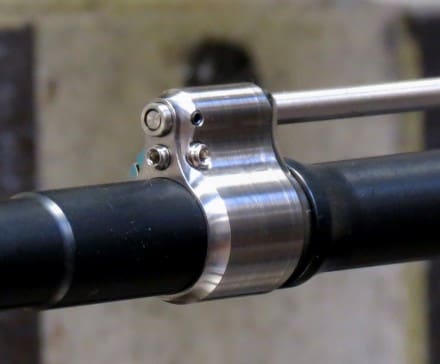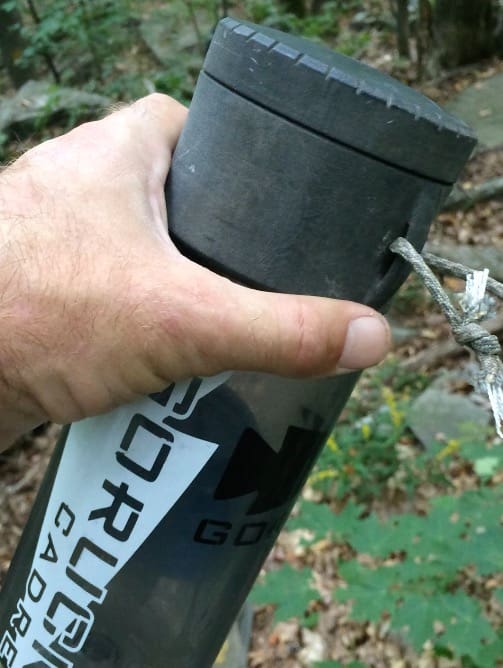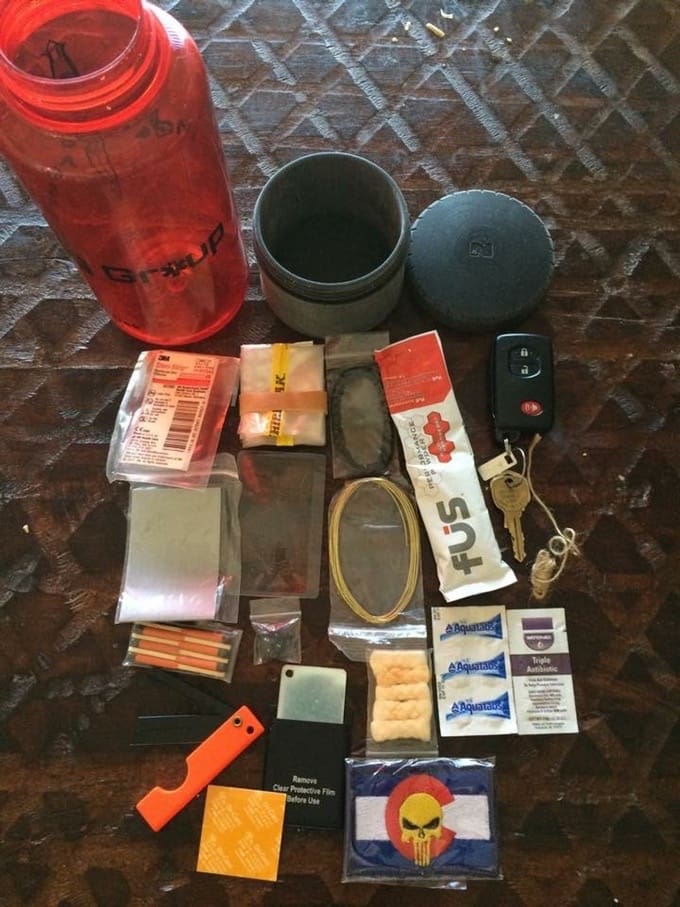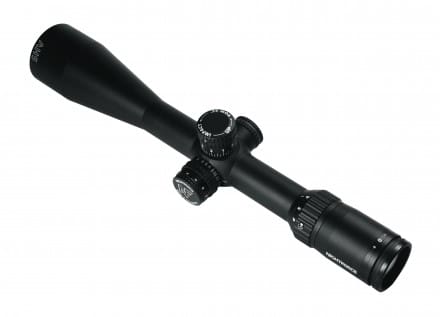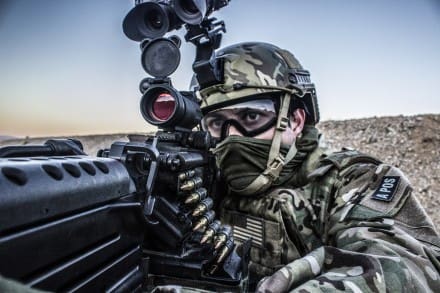Recently a professional instructor wrote an article about “Malfunctions Sticks”. Read the original article here: soldiersystems.net/2015/12/24/malfunction-sticks-not-work. For those that don’t know, a malfunction stick is simply an item designed to cause a malfunction, usually held near the ejection port of a semi-auto rifle. The designs I’ve seen usually consist of a long skinny handle with a business card size piece of material at the far end. While a shooter is firing the weapon, some other person or instructor can place the malfunction stick over the ejection port, interfering with the weapon’s ability to properly cycle and thereby causing a malfunction.
Semi-autos do four things during their cycle of operation; fire, extract, eject, and feed. If the weapon fails to feed or fire the action required correcting this is what is commonly called “Immediate Action”. In the Army I was taught the acronym S.P.O.R.T.S. Simplified this usually consists of a tap/rack or tap/tug/rack. The tap ensures the magazine is seated (this may have caused the fail to feed) and the rack of the charging handle then extracts and ejects the misfired or otherwise malfunctioning round from the chamber if needed before inserting a new round from the magazine. Usually the stimulus for the shooter to execute this immediate action is a bolt forward trigger press (hammer drop or “click instead of bang”).
This can be introduced in training building block style, with dry work to begin just to get the mechanics down (running a charging handle with the support hand for instance) and then progressing to dummy rounds mixed in with live rounds to surprise the shooter and start to develop more of an ingrained response.
None of the above should be earth-shattering to anyone with some basic training either in the military, competitive world, municipal law enforcement, federal law enforcement, or Billy Bob’s Gun Shop and Basement Range. I’ve received and/or conducted training in four of these areas and seen this explained and taught around the world.
Multitudes of carbine instructors often teach these Fail to Fire or Fail to Feed malfunctions (known in some circles as Type 1 malfunctions) Additionally taught by many instructors are malfunctions related to a weapon Failing to Extract or Failing to Eject (known in many circles as Type 2). The correction for these malfunctions is often called “Remedial Action” and is slightly more complicated than tap/rack. There are a bunch of great instructors out there teaching a variety of ways to clear these types of malfunctions so I’ll save the ink. It usually involves things like maybe locking the bolt or slide to the rear, stripping the magazine, digitally clearing brass, having the barrel skyward, racking the charging handle once or three times, etc. While shooting, the stimulus for remedial action is often twofold. First the shooter experiences a “dead trigger”, meaning not a hammer drop (no click instead of bang). A dead trigger is an indication the bolt is out of battery (not forward and locked). There is a distinct auditory, and more importantly tactile, difference between a “dead trigger” and a hammer drop. The bolt out of battery usually means one of two things; an empty weapon (probable) or a Type 2 malfunction (possible).
Training students in Type 2 malfunctions is more involved that Type 1’s. They are labor intensive to setup for a shooter. They’ve often been set up by the instructor or student coach and involve closing the bolt on a partially ejected piece of brass (stovepipe), double-feed, or fail to extract while the student doesn’t look. This is time intensive and is good for talking a student through the mechanics of clearing out these malfunctions but it is hard to give a student a lot of reps and have it start from a more true-to-life stimulus while they are thinking about something other than the Type 2 they are about to clear.
Enter the “Malfunction Stick”. While the student is shooting a course of fire that you’ve given them, you can randomly cause a Type 2. The writer who published the article disparaging this method said the randomness was an annoyance in one breath, but then talked about how the shooter expects the malfunction. I think randomness in training is a vehicle for checking the level of ingrained retention that a student has in a particular skill. And while the presence of the stick in the shooter’s peripheral vision indicates they may have a stoppage, it by no means guarantees it or lets them wholly concentrate on it as they are busy with a course of fire or exercise. This is of course after a student has been progressed to this point.
As an aside, I encourage a quick check of the ejection port (tactile or visual) as the last step of an engagement. This is especially true for right handed shooters who can’t see the ejection port with the weapon shouldered. And maybe I use the sticks wrong or made them out of the wrong material but I never find it to cause malfunctions reliably. That’s cool because while the shooter may pick up on the presence of the stick, as I stated above they just shoot the course of fire as designed. Their stimulus to fix their gun is that dead trigger or the check of the ejection port, just like a naturally occurring Type 2 malfunction being realized. I’ve noticed the malfunctions sticks cause a variety of different malfunctions. Type 2’s not cleared in a logical order often make for much worse malfunctions. This happens in spite of the malfunctions “looking” different. I’ve also seen a shooter struggle clearing the first one and by the sixth or seventh, do so flawlessly and much more quickly.
The article also mentions that the stick conditions shooters to accept things in close proximity to their weapon. I don’t know how to respond to this exactly. Yes, it accepts one to accept malfunction sticks close to their weapon, you know, so they can work on malfunctions. Does this mean if I’m in a back alley in Peshawar, getting ready to engage a threat, I won’t respond to the kid on the bicycle grabbing at the side of my rifle? Sometimes I think the idea of a “training scar” is the new training scar. “What if we are conditioning people to do X? “ “What if not having them do Y every time they draw their gun, they won’t do it when it counts?” Someone will bring up Newhall and cops putting empty casings in their pocket (which evidently didn’t happen at Newhall) every time this esoteric topic comes up. I’m not being dismissive of the idea of a training scar or saying conditioning someone is not real. I buy into all that neural pathway stuff, I really do. But sometimes it really is just about the hard skill. Blasphemy, I know. For example, if I’m working on the mechanics of a concealed draw, decreasing the shooters time to an accurate string of shots from the holster, do I need them to also displace every time? If I don’t, will they not displace when it’s for real? Or is there a better way to train displacement then having them take a step to the left or right Arthur Murray style? Later we can incorporate, or “drill” these skills together as the basic skills are more ingrained. I can have a student draw while I charge him with an edged weapon or draw my own concealed handgun. The conditioning is not being shot, or not having me tackle them as I sewing machine a training shiv into their abdomen. I’ve recently been reading and listening to some in the industry talk about the idea that there some things we shouldn’t or can’t train live fire. I couldn’t agree more. But hey, it’s more comfortable to shoot retention against cardboard and point out how good your group is than instill these skills when I’m teeing off on your head so people don’t often want to go there.
The article states “The purpose of training is to create environments as close as possible to real world conditions”. While I agree with the intended sentiment, I disagree with that statement from a logic standpoint. That’s a useful means for good training, not the purpose. I’d more like to point out it said this right after a sentence talking about how important simplicity is. While I agree that mimicking the real environment one is likely to face is best when possible for training exercises, sometimes it’s about initial installation of hard skills, attitudes, and knowledge. Years ago I received some long weeks of pretty top notch driving instruction on closed circuits, unimproved surfaces, and actual race tracks. But it wasn’t good training because there were no minarets? It wasn’t effective training because I was only focusing on driver inputs and vehicle performance issues one at a time and not all the other dangers I was likely to face in the future while driving?
When you shoot a piece of steel, it makes a particular sound. That’s why they are such an efficient training aid at distance. I get used to hearing it and it means accurate fire is being delivered. People don’t make that sound. Does that mean we shouldn’t shoot steel? Are students having to block out a certain stimuli in their environment while training that don’t really occur in a defensive engagement. The author of the article says “Unlike the simulators (referring to arty simulators), the malfunction stick is a deliberate interruption to training that is not patterned after any real world context, and is more representative of an instructor’s lack of experience.” My experience shows Type 2 malfunctions can occur while firing a semi-automatic rifle, however infrequently. The stick is causing an interruption to training? At that point in time the malfunction the stick causes is the training and it is patterned after the real world where they can happen on their own. That’s how I see it. Or am I missing something?
In reading the comments of the article (I know, I know) I see references to fundamentals, operational experience, combat firearms training, who is qualified to teach this stuff and who isn’t, etc.. Not really in the lane of this article’s title but it has relevance to the subject matter. Let’s pump the brakes a little shall we and reach into the glovebox for some perspective? Grab any kid off the street in Mogadishu circa 1993 or one of many kids on the south side of Chicago today. They have as much “gunfight” or “operational” experience as many seasoned veterans. Look to any police agency for an officer who’s won a defensive engagement or multiple. Does that mean they are proficient with a weapon system or better yet, sharing that proficiency? I’m sure all these groups of people have much they could teach people interested in the idea of surviving lethal engagements and possibly they are indeed a whiz with a gun. That doesn’t necessarily mean that’s where I’m getting my “combat firearms” training from. Today, we can gain information and training from seasoned and experienced people from the top ranks of the military, law enforcement, civilian world, and competitive world (and who are specifically skilled in sharing it) and we should. We can review countless videos of actual lethal engagements between humans, we can speak to survivors for anecdotal evidence, we can look at statistics, and we can use our brains and bodies after gaining sufficient experience to sort through the instruction we receive. Again, when I’m teaching a shooter to “run the gun”, I’m usually doing just that. Once that is firmly established we start adding layers to the onion while emphasizing adherence to those basic fundamental skills. That difference is often muddled and makes for what I consider less than optimal instruction sometimes.
I have never used the stick to lock a bolt back. For the most part I don’t push on the rifle in any noticeable way. I hold the stick in proximity to the ejection port to interfere with the cycle of operations. This can, and does, occur on its own while shooting.
Sometimes as instructors I think we complicate things. What is the skill or skills you are working on with any particular drill or exercise? Good, goal based training is key. To address some of the critics of the stick or other skills training that is out there, I agree, it is a priority of training thing. Would I have people clearing Type 2’s four hours into their first day on the rifle? No I would not. Would I use a Malfunction Stick to cause Type 2’s for an experienced shooter to experience and practice clearing these types of stoppages, reinforcing gun handling under pressure, as well as conditioning them to check their ejection port? Yes I would.
This debate or argument reminds me of a recent discussion about how “tactical” reloads are stupid. That article was put out online and it got a lot of supportive comments. First of all, the tone of someone’s opinion says a lot to me. I’ve never been much for drama and absolutes. From a priority of training perspective I guess I can see the point about tactical reloads. But how is the ability to efficiently plus up a gun while retaining a partial magazine before it goes dry a useless or stupid skill? I could understand someone saying that it’s not that important to train based on limited training time and chance of employment, but “useless” or “stupid”? Not so much. If I guy wants to spend an evening writing an article about it it’s a free country. Internet dissemination doesn’t make it gospel.
An overarching theme behind much of this is the idea of “training” vs. “instruction”. This idea is not original to me so I can’t claim it. When I hit the mat or gym three times a week, working on improving or sustaining skills, I consider that training. When I go to a weekend class and learn new ideas, skills, or techniques that is usually a heavy dose of instruction mixed in with some training. One doesn’t go to a weekend judo seminar and leave saying “Hey, now I’m proficient in judo.” But through years of toil, hard work, instruction, and application, I would say one is now “trained”. Give someone an hour class on a flashbang and I wouldn’t consider them trained. They’ve definitely received instruction. I would expect that first deployment of an NFDD to have about a fifty-fifty chance of going smoothly. Once they’ve gone through deployment procedures hundreds of times in training, had multiple chances of operation deployments, etc., I’d say they are “trained”. That’s my take on it anyway. Semantics matter and I’ve always liked the saying “Professionalism Through Language”. This malfunction stick is an item that can be used for instruction and later, training.
Type 2 malfunctions (or whatever you want to call them) happen. Training how to clear them and get your gun up and running is not wasted time. I feel the stick is a decent way to do just that. I think sometimes we can get a little too far into the weeds on the possible unintended consequences of particular instruction techniques. I hold this opinion having been trained in the use of force and having provided that training in a variety of ways and having then applied it myself and seen it applied. Of course this is my opinion. If an instructor doesn’t want to train people in that particular issue or with that technique, that’s cool, I’ve moved on. The title of the article that spurred me to write this is “Malfunction Sticks Do Not Work”.
Malfunction sticks are supposed to cause malfunctions. They do that.
This essay turned treatise started as some quick thoughts on the use of a particular instructional technique and I’m sure its length now violates all sorts of internet attention span studies. While my article’s title mentions Malfunction Sticks specifically, this topic and the original article’s treatment of it made me think more about the current state of the firearms instruction field as well as training methodology. As with most things in life, this is my opinion on this subject today given the experience and information I have at this point. It is subject to change.
Here’s to the fighting the good fight.
Robert (Bob) Welch
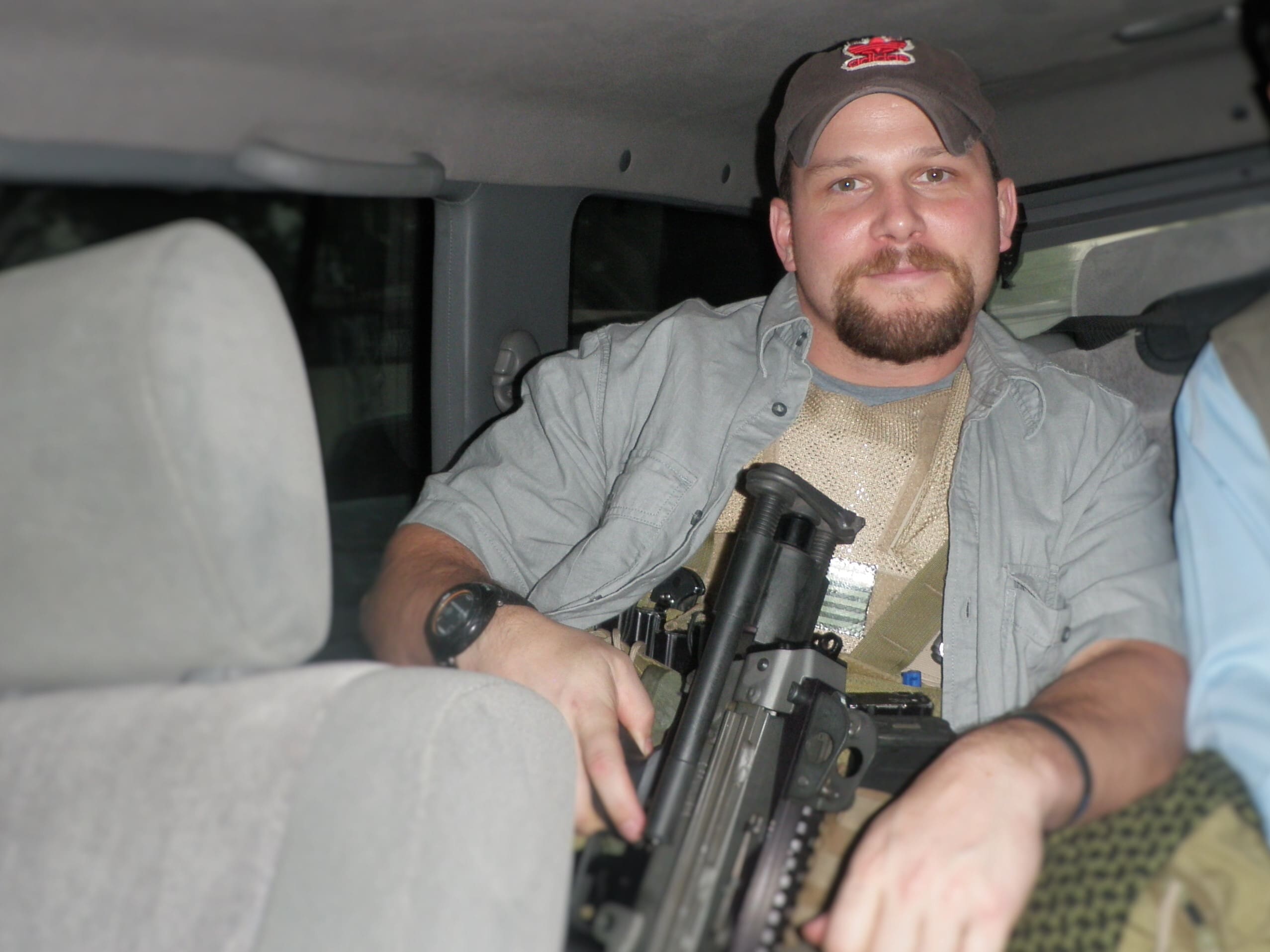
Bob Welch is a police officer in the Midwest and a full-time training officer at his agency in addition to being a perpetual student. He is an Iraq Veteran (U.S. Army Reserves) and a former Special Agent with the U.S. Department of State, Diplomatic Security Service. While at D.S.S., Bob was assigned to the Office of Mobile Security Deployments (M.S.D). Bob is not near as good of a shooter as he should be for the tax dollars invested but is still working on it. Bob can be contacted at foundationtactical@gmail.com.


